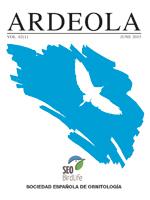We used patagial tags, VHF radio transmitters, and satellite-received transmitters to investigate the movements and survival of juvenile saker falcons fledged from artificial nests in open landscapes and natural nest sites in hilly areas in Mongolia. During the post-fledging dependence period (PFDP) juveniles progressively moved farther from their nest until dispersal from the natal area. Natal home ranges were larger for juveniles fledged at artificial than natural sites and the distance moved by juveniles during PFDP was positively related to fledging date and brood size. Duration of the PFDP was estimated as 40 days (range: 31–52 days). Over the PFDP, the best-fitting model to explain juvenile survival incorporated fledging date and nest site type, with juvenile survival being higher in early fledged broods from natural sites. Predation was identified as a major cause of mortality, especially in open landscapes where artificial nests were located. However, because artificial nests produced more fledglings, we found that overall productivity of juveniles to dispersal at artificial and natural nests sites did not differ significantly.
How to translate text using browser tools
1 June 2015
Influence of Nesting Location on Movements and Survival of Juvenile Saker Falcons Falco cherrug During the Post-Fledging Dependence Period
Md Lutfor Rahman,
Nyambayar Batbayar,
Gankhuyag Purev-Ochir,
Mark Etheridge,
Andrew Dixon
ACCESS THE FULL ARTICLE

Ardeola
Vol. 62 • No. 1
June 2015
Vol. 62 • No. 1
June 2015
halcón sacre
movement
movimientos
post-fledging
pos-volantón
saker falcons
supervivencia




